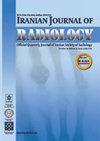两种不同紫杉醇洗脱支架(Zilver PTX和Eluvia)治疗跨大西洋跨社会共识文件(TASC)C/D梗阻性股腘窝病变的一年疗效
IF 0.2
4区 医学
Q4 RADIOLOGY, NUCLEAR MEDICINE & MEDICAL IMAGING
引用次数: 0
摘要
背景:血管内治疗是外周动脉疾病患者的标准治疗选择之一。紫杉醇洗脱支架(PES)在治疗梗阻性股腘病变方面显示出良好的效果。全球有两种类型的PES,即Zilver PTX(美国库克医疗公司)和Eluvia(美国波士顿科学公司)。然而,目前还没有研究比较在现实世界中应用这两种PES类型的结果。目的:本研究旨在评估两种不同类型的PES治疗跨大西洋社会共识文件(TASC) C/D阻塞性股腘动脉病变后的一年结果。患者和方法:本研究为单中心、回顾性、观察性研究,于2017年2月至2018年5月连续纳入34例患者的37条肢体,其中男性30例,女性4例,平均年龄71.9±9.1岁(53-90岁)。在所有患者中,在次优血管成形术后使用Zilver PTX (Cook Medical)或Eluvia (Boston Scientific) PES治疗TASC C/D阻塞性股腘动脉病变。此外,还确定了患者一年的原发性通畅率、无临床驱动的靶病变血运重建术(TLR)和无事件生存率。结果:平均病变长度为24.6±6.6 cm(范围9 ~ 46 cm)。结果显示,78%的病变(29条肢体)出现闭塞,46%(17条肢体)出现中度以上钙化。根据TASC分类,检出D型病变25例(68%),检出C型病变12例(32%)。平均每条肢体使用2.5±0.7个支架(范围,1 -3),覆盖平均长度24.3±7.9 cm(范围,6-35 cm)。总共使用了56支Zilver PTX支架用于23个肢体,36支Eluvia支架用于14个肢体。Kaplan-Meier估计1年原发性通畅度和TLR自由度分别为78%和88% (Zilver PTX支架分别为76.3%和81.2%;Eluvia支架,分别为91.7%和100%)。2例患者(2/37,5.4%)报告了主要不良事件,包括治疗病变的急性血栓闭塞。结论:两种PES治疗TASC C/D病变1年的安全性和有效性均较好,无显著差异;因此,它们可以被认为是手术的替代治疗方法。本文章由计算机程序翻译,如有差异,请以英文原文为准。
One-Year Outcomes of Two Different Paclitaxel-Eluting Stents (Zilver PTX and Eluvia) for Trans-Atlantic Inter-Society Consensus Document (TASC) C/D Obstructive Femoropopliteal Lesions
Background: Endovascular therapy is one of the standard treatment options for patients with peripheral arterial disease. Paclitaxel-eluting stents (PES) have shown promising results in the treatment of obstructive femoropopliteal lesions. Two types of PES, namely, Zilver PTX (Cook Medical, USA) and Eluvia (Boston Scientific, USA), are available worldwide. However, no study has yet compared the outcomes of applying both PES types in the real world. Objectives: This study aimed to assess the one-year outcomes of two different types of PES for Trans-Atlantic Inter-Society Consensus Document (TASC) C/D obstructive femoropopliteal lesions following suboptimal angioplasty. Patients and Methods: This single-center, retrospective, observational study examined 37 limbs of 34 patients (30 males and four females) with the mean age of 71.9 ± 9.1 years (range, 53-90 years), who were included consecutively from February 2017 to May 2018. In all patients, either a Zilver PTX (Cook Medical) or an Eluvia (Boston Scientific) PES was used for TASC C/D obstructive femoropopliteal lesions following suboptimal angioplasty. Moreover, the patients’ one-year primary patency rate, freedom from clinically driven target lesion revascularization (TLR), and event-free survival rates were determined. Results: The mean lesion length was measured to be 24.6 ± 6.6 cm (range, 9 - 46 cm). Based on the results, 78% of the lesions (29 limbs) showed occlusion, and 46% (17 limbs) showed more than moderate calcification. According to the TASC classification, type D lesions were detected in 25 (68%) limbs, while type C lesions were detected in 12 (32%) limbs. The mean number of stents used was 2.5 ± 0.7 per limb (range, 1 - 3) to cover a mean length of 24.3 ± 7.9 cm (range, 6-35 cm). Overall, 56 Zilver PTX stents for 23 limbs and 36 Eluvia stents for 14 limbs were used. The Kaplan-Meier estimates of one-year primary patency and freedom from TLR were 78% and 88%, respectively (Zilver PTX stent, 76.3% and 81.2%, respectively; Eluvia stent, 91.7% and 100%, respectively). Major adverse events were reported in two patients (2/37, 5.4%), including acute thrombotic occlusion of the treated lesions. Conclusion: Both types of PES showed promising one-year outcomes for TASC C/D lesions regarding safety and efficacy, without any significant differences; therefore, they can be considered as an alternative therapeutic approach for surgery.
求助全文
通过发布文献求助,成功后即可免费获取论文全文。
去求助
来源期刊

Iranian Journal of Radiology
RADIOLOGY, NUCLEAR MEDICINE & MEDICAL IMAGING-
CiteScore
0.50
自引率
0.00%
发文量
33
审稿时长
>12 weeks
期刊介绍:
The Iranian Journal of Radiology is the official journal of Tehran University of Medical Sciences and the Iranian Society of Radiology. It is a scientific forum dedicated primarily to the topics relevant to radiology and allied sciences of the developing countries, which have been neglected or have received little attention in the Western medical literature.
This journal particularly welcomes manuscripts which deal with radiology and imaging from geographic regions wherein problems regarding economic, social, ethnic and cultural parameters affecting prevalence and course of the illness are taken into consideration.
The Iranian Journal of Radiology has been launched in order to interchange information in the field of radiology and other related scientific spheres. In accordance with the objective of developing the scientific ability of the radiological population and other related scientific fields, this journal publishes research articles, evidence-based review articles, and case reports focused on regional tropics.
Iranian Journal of Radiology operates in agreement with the below principles in compliance with continuous quality improvement:
1-Increasing the satisfaction of the readers, authors, staff, and co-workers.
2-Improving the scientific content and appearance of the journal.
3-Advancing the scientific validity of the journal both nationally and internationally.
Such basics are accomplished only by aggregative effort and reciprocity of the radiological population and related sciences, authorities, and staff of the journal.
 求助内容:
求助内容: 应助结果提醒方式:
应助结果提醒方式:


